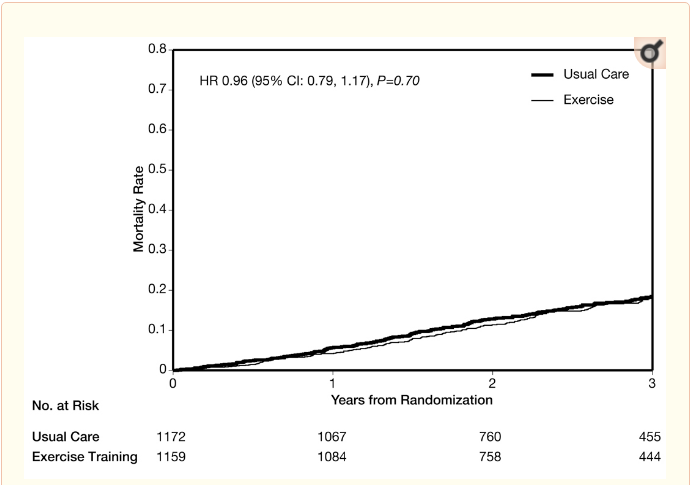Safety of Virtual Cardiac Rehabilitation
Is virtual cardiac rehab safe?
There is a significant amount of data regarding the safety of onsite cardiac rehab (CR) that shows adverse events are extremely rare. By appropriately risk stratifying patients and assigning individualized exercise prescriptions, the rate of adverse events can be lowered even further. In order to gain insight about the safety of virtual (also called home-based) cardiac rehab, it is most important to look at the incidence rate of adverse events during exercise of the CR-eligible population. Since home-based cardiac rehab has only recently been allowed by regulation, research specifically aimed at assessing its safety is still being conducted. However, since the exercises performed in home-based rehab are comparable or less strenuous than onsite rehab, its safety can be inferred. It is also important to understand that low to moderate risk, stable patients are considered the most appropriate candidates for home-based rehab.
What is the evidence?
The HF-ACTION study, which paved the way for inclusion of HFrEF as an indication for CR, looked at the effects of exercise training compared to usual care in 2331 heart failure patients (median ejection fraction of 25%) and found that the patients in the exercise group experienced a statistically insignificant decreased incidence of death or hospitalization. In other words, exercise in this patient population potentially decreased the likelihood of an adverse event. This study also assessed the types of adverse events and the frequency with which they occurred, and found that even when there were adverse events, they were infrequent and very rarely life-threatening.
 Graph showing statistically insignificant difference in mortality between exercise group and usual care. Source: HF-ACTION, O'Connor et. al.
Graph showing statistically insignificant difference in mortality between exercise group and usual care. Source: HF-ACTION, O'Connor et. al.
One study [2] retrospectively evaluated the incidence of adverse events in 3,511 cardiac rehab patients with a history of myocardial infarction, coronary artery bypass grafting, and risk factors for coronary artery disease. The researchers found that the total number of patient-hours spent exercising was 338,688 with an adverse event rate of 1 per 58,902 patient-hours per year. This equates to an adverse event incidence rate of just 0.02%!
Another study [3] found that the risk of cardiac death based on reports of programs in the United States is approximately one event in every 60,000 participant-hours of exercise. This led the researchers to conclude that
“at this rate, a typical rehabilitation program that has 95 patients exercising 3 hours per week could expect a sudden cardiac death during an exercise session once every 4 years.”
Importantly, this statistic does not exclude high risk patients from the calculation, meaning the incidence frequency is even lower when the recommended patient population is targeted.
Lastly, a survey of 136 CR programs in Japan [4] discovered only 12 adverse events and 1 life-threatening adverse event over the course of 383,096 patient-hours of exercise training among cardiac patients. The survey also found that when graded exercise testing was conducted prior to creating the patients’ exercise prescription, 0 life-threatening adverse events occurred during 277,721 patient-hours of exercise training.
Although these studies do not specifically assess the safety of home-based rehab, they unanimously suggest that exercise among the eligible patient population is safe, and very rarely results in a life-threatening adverse event. Furthermore, risk can be further reduced by appropriately targeting low to moderate risk patients for inclusion in home-based rehab and ensuring that their exercise prescription has been individualized for their needs.
What else can we do to make sure it’s safe?
It is important to note that none of these studies excluded high risk patients from participation (HF-ACTION enrolled only high risk patients), and still resulted in remarkably few adverse events. Even when adverse events did occur, in most cases they were not life-threatening.
That being said, the best strategy to reduce incidence of adverse events during home-based cardiac rehab is risk reduction through selection of appropriate low to moderate risk patients and education on home-exercise. Ideally, these patients would have also had an initial functional capacity assessment or graded exercise testing performed prior to enrollment in the home-based program to ensure that the exercise prescription is appropriate for the patient. Some additional risk reduction strategies include:
- Ensuring that patients are familiar with any symptoms that could be an indication of an adverse event and that they understand the appropriate steps to take (ie call 911, take nitroglycerine, glucose tablets, etc.).
- Ensuring that patients know to check to make sure that they are in a safe physiologic range (ie blood glucose for diabetics) before beginning a home exercise.
- Ensuring that the assigned exercise is appropriate for the patient’s ability level.
- Ensuring that the patient is familiar with the RPE scale and what an appropriate RPE for their exercise should be.
- Confirming that the patient has a safe area to exercise at home.
- Obtaining the patient’s home address and an emergency contact prior to beginning any strenuous virtual exercise sessions.
